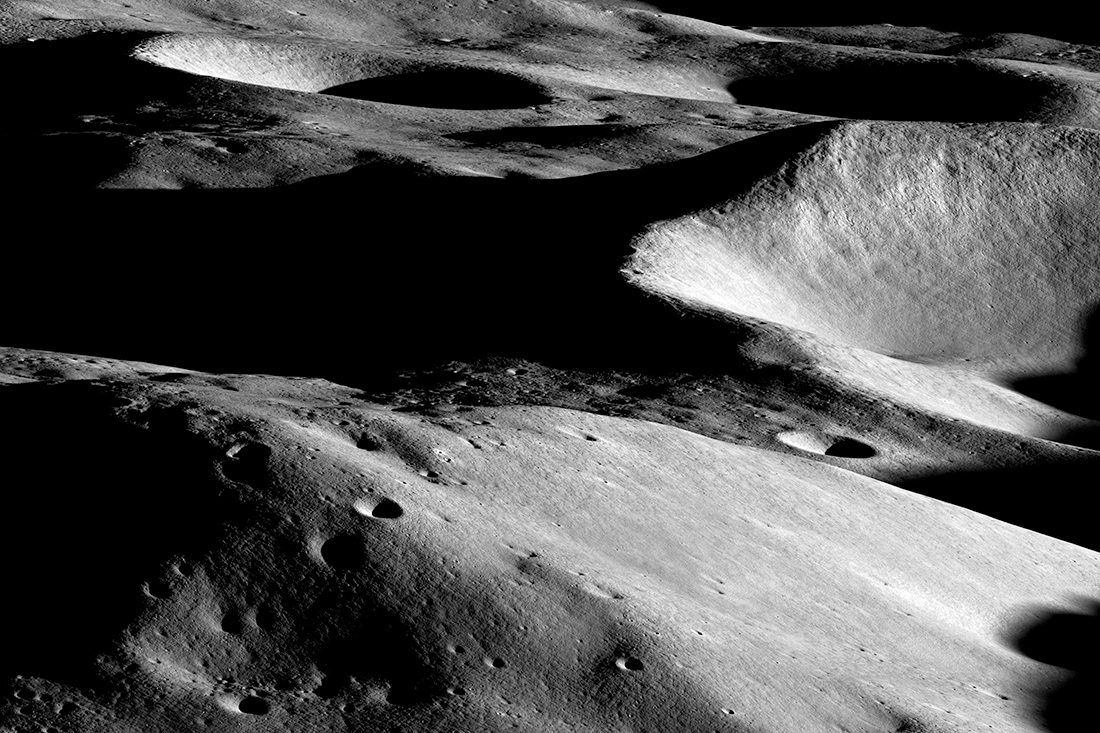
The Johns Hopkins Applied Physics Laboratory (APL) in Laurel, Maryland, leads one of five teams that NASA recently selected to collaborate on lunar science and lunar sample analysis research. The effort will support the exploration of the Moon as part of the agency’s Solar System Exploration Research Virtual Institute (SSERVI).
Headed by Space Exploration Sector (SES) planetary scientist Dana Hurley, the Research Activities Supporting Science and Lunar Exploration (RASSLE) team will look into fundamental processes on the lunar surface, focusing on the cooling and crystallization of the upper mantle and the sources and redistribution of volatiles (water and other chemicals) across the Moon. APL will provide information key to mapping out the next steps in lunar exploration.
RASSLE (which rhymes with “dazzle”) scientists and engineers will investigate the surface chemistry and geology of the Moon’s South Pole-Aitken Basin, which will help to unravel the ancient bombardment history of the Moon. They will also research permanently shadowed regions, known to host water ice that future explorers will tap for resources such as drinking water and rocket fuel.
Applying laboratory results to data analysis and modeling, while leveraging APL’s deep expertise in lunar science, the team will investigate how volatiles evolve during impacts into the Moon’s icy regolith, or surface dust. The work will shed light on just how the chemicals settle and move within those permanently shadowed regions, known as PSRs.
“RASSLE is a great opportunity to lay a scientific foundation for the future of lunar exploration,” said Hurley. “Our research will address one of the highest priority areas in lunar science, guided by the questions and considerations NASA needs to plan the robotic and human missions that will establish a permanent presence on the Moon.”
Starting its work in September, the RASSLE team will include representatives from 15 institutions around the world. It will conduct impact experiments at NASA Ames Research Center, analyze the geological units of South Pole-Aitken Basin, interpret radar data for evidence of ice in lunar permanently shadowed regions, model volatile sources to PSRs, create and analyze samples of lunar-like minerals in the lab, and coordinate mission concept studies in APL’s Concurrent Engineering Laboratory.
The team will also work with the University of Puerto Rico, Bowie State University and other minority-serving institutions to create a course for undergraduate and graduate science and engineering students, who will develop and test out a spacecraft mission concept with APL scientists and engineers.
APL is currently partnering with commercial and academic organizations for missions like Lunar Vertex, and this project will expand its evolving lunar portfolio.
“We’re excited that our program will not only lay the groundwork for missions back to the Moon, but we’ll have a role in building and diversifying the STEM workforce,” said SES’ Ed Rivera-Valentín, who leads the student project.
Based and managed at NASA Ames, SSERVI was created in 2014 as an expansion of the NASA Lunar Science Institute. It supports scientific and human exploration research at potential future human exploration destinations under the guiding philosophy that exploration and science enable each other. SSERVI members include APL among other academic institutions, nonprofit research institutes, commercial companies, NASA centers and other government laboratories.
Alongside SSERVI, APL is also integrating critical elements of the nation’s lunar strategy as the NASA lead for the Lunar Surface Innovation Consortium.

Related Topics
For Media Inquiries
For all media inquiries, including permission to use images or video in our gallery, please contact:
Michael Buckley
All Media Resources

